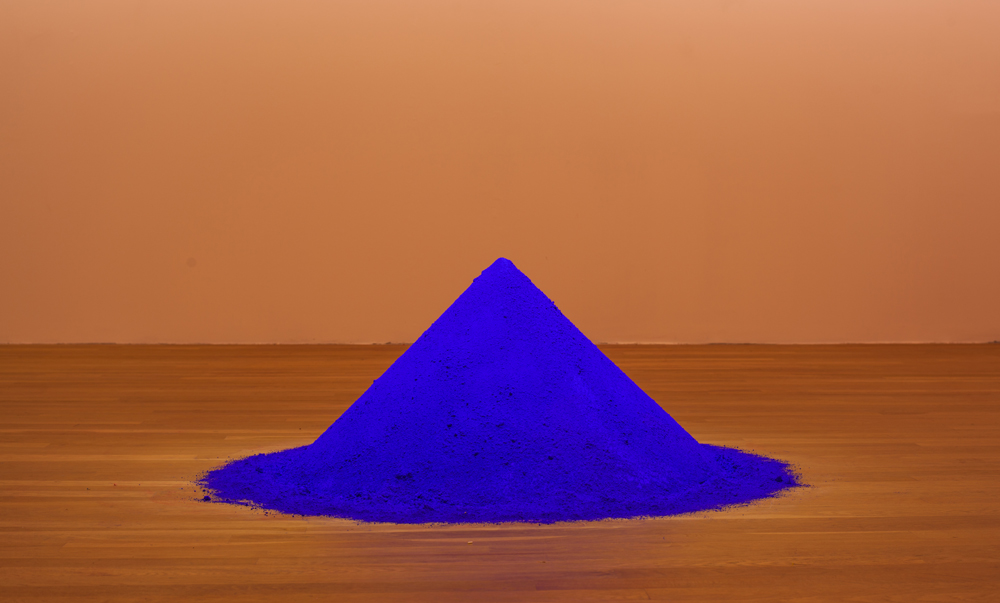DESTIERRO
ANISH KAPOOR
27.05.17 - 27.08.17 / Sala PAyS






In the English language, there are many words that translate into one single word in Spanish: tierra. The Spanish term can mean Earth, ground, land, homeland, territory or soil. But there is no one perfect word to convey the meaning of destierro, that is, when one is bereft of his or her tierra.
This project began four years ago, with a proposition to create an artistic interpretation of the site that carries the memories and wounds of the most dramatic years in the history of Argentina. The symbolic name, Monument for the Victims of State Terrorism, recalls the immense disproportion of the individual versus oppression on the part of the State. I began the project inspired by a piece that Anish Kapoor presented only once at Lisson Gallery in London, titled Anxiety. It is a work unlike any other by Kapoor, a sound installation about presence and perception. An empty room is fitted with an infrasound device that, although imperceptible, triggers a feeling of anxiety similar to that which all the victims remembered on the Monument felt on the days prior to their fate. This was the point of inflexion of the concept for this exhibition. It is an invisible work that produces a feeling in people that connects with collective memory of loss, departure, invisibility and disappearance. I initially articulated this powerful work with other works in Anish’s oeuvre that deal with the threshold of visibility; works that were felt, but had little or no physical, visible evidence.
But to be Anish Kapoor, you have to be an artist who defies the public, challenges curators and shakes up institutions, usually pushing in the direction of unknown territory. That is what true artists do. So Anish came to me with a fantastically interesting new work. This piece makes disappearance and banishment newly evident, but beyond that
it transforms them into experience. Destierro or in a free English version, Unearth, can be seen as a reading of one of the major global dramas of our time. People who have lost their land, been banished, exiled, impoverished or persecuted form the narrative of the early 21st Century immigration movement, the result of savaged, war-torn lands in many parts of the Earth. It is also expressed in the form of our loss of the notion of nation. A new chapter in this long story, where the State is no longer oppressing you; it has simply faded into darkness.
Desentierro (unearthing or unburial) is also conceptually linked to this idea, as the revelation of evidence that we have chosen to hide or forget. As if it were possible to live in a land of blood without the inconvenience of finding the remains of the bodies.
So this exhibition was reborn in light of our urgent times. The real borders of today’s world are no longer the ones that separate nations, as some leaders would have you see, but the borders that separate those that have some bit of ground to stand on and those that have none. This is the cross-section of a new geography.
A new, as-yet unnamed work became the central piece of the exhibition, which takes up to one hundred tons of earth and spreads it to the very limits of the space available in the PAyS space, Memory Park’s main hall. These tons of earthen matter strangely tinted red seem to have been moved there by a tractor painted a monochromatic blue. The space that used to be available to visitors is now taken over by this new, red colored matter that cannot be stepped on. The viewer’s very condition in front of the work is part of the experience itself: The displacement of earth causes the displacement of people. The fact that this earth is tinted red creates a link to some of Anish Kapoor’s early works with pigment. The very act of painting this earth red, however, creates physical evidence of a certain violence. Soil is the ultimate evidence of life and death. Soil is the element that connects the past with the present, and it is a portrait of permanence, power, wealth and culture. Soil retains the memory of what happened before and also enunciates potential for the future. Soil is where life comes from and where death will lead us to. There is no destiny without soil, and yet having some of it has become an increasingly rare privilege. Migration is a search for soil.
Terrorism shares the same signifier as the Spanish words for Earth (tierra), earthquake (terremoto), and terrain (terreo). Terrorism has been the excuse to justify a great deal of political violence and injustice in the world. Basically, most strong political opposition of any sort in history has been called terrorism at one point or another. The use of this word can also grant the State the right to limit freedom, the political arena for gaining power. The creation of State Terrorism in Argentina was one form of the fight against something the dictators called «terrorism». Similarly, the migration crisis we are experiencing today was created and continues to be sustained as a response to «terrorism». This excuse has no preference for right or left, North or South, it has been used by any side to justify violence and abuse. «Abuse of Power Comes As No Surprise».
Another important component of this exhibition is silence. In Japanese culture, there is a concept called Ah – Un no Kokyu, which can be simplified as communication through silence. In Japan, the way one communicates through silence usually evaluates a person’s density. Infrasound waves are imperceptible to the human ear; they are powerful waves whose presence can be proven, although they are not perceptible. In an underground space adjacent to the main hall, we have installed a piece that has little to do with the eye or the ear. Instead, it uses sophisticated infrasound equipment that produces a very powerful, inaudible sound. This work had to be situated there because the sound it produces can prove to be unbearable for anyone exposed to it for more than ten minutes. In a way, this is the sort of emptiness that occupies the entire space. Anxiety is a work about this threshold; although outside the range of our hearing, it can be sensed by our skin, our stomachs or our livers. There is something weirdly present in this room, something we cannot name, but neither can we neglect its presence. The silence has never been felt so loud. It generates discomfort and a high level of anxiety. It brings back one of mankind’s ancient fears, activated on the verge of becoming prey. In more recent terms, it brings back the dramatic feeling that anticipated the arrival of the death squads just prior to being captured. Just like what happened to many of those whose names are on the walls of the Park’s Monument.
The ritual of experiencing this exhibition is about connecting memory and perception, what one sees and the invisible, evidence and absence, what we know and what we will never know
Anish Kapoor is considered one of the most important contemporary artists working today. Perhaps most famous for public sculptures that are both adventures in form and feats of engineering, he manoeuvres between vastly different scales, across numerous series of work. Immense PVC skins, stretched or deflated; concave or convex mirrors whose reflections attract and swallow the viewer; recesses carved in stone and pigmented so as to disappear: these voids and protrusions summon up deep-felt metaphysical polarities of presence and absence, concealment and revelation. Forms turn themselves inside out, womb-like, and materials are not painted but impregnated with colour, as if to negate the
idea of an outer surface, inviting the viewer to the inner reaches of the imagination. Kapoor’s geometric forms from the
early 1980s, for example, rise up from the floor and appear to be made of pure pigment, while the viscous, blood-red wax sculptures from the last ten years –kinetic and selfgenerating– ravage their own surfaces and explode the quiet of the gallery environment. There are resonances with mythologies of the ancient world –Indian, Egyptian, Greek and Roman– and with modern times, where twentieth century events loom large.




